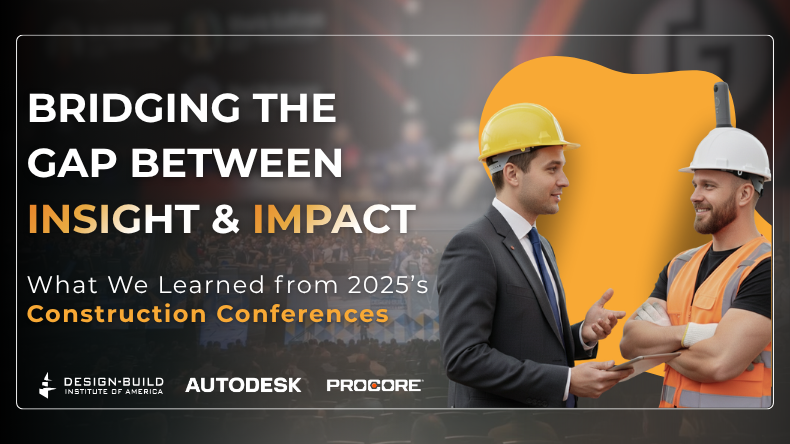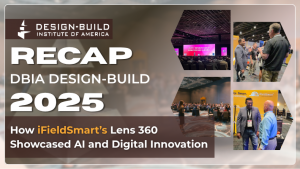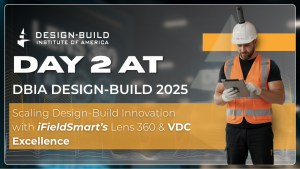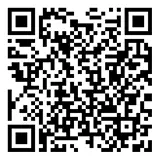Reading Time: 8 minutes
Three Conferences, One Clear Message
This year, we attended three significant construction conferences this year: DBIA Design-Build, Procore’s Groundbreak, and Autodesk University (Design and Make). And they all related a different aspect of the same tale. A story about how construction is done, waiting for the future. The future arrived, checked in, and got to work.
While touring the convention center, engaging with industry professionals, and discussing the future of construction, we observed meaningful progress toward closing the gap.
Autodesk: Where Design Meets Reality
AU 2025 felt like stepping into a construction lab where every experiment was working. The energy was different this year. Past conferences loved talking about what technology could do. This time? Everyone wanted to know what it was doing. Right now. On real projects.
Work Smarter, Not Harder
iFieldSmart empowers your team with AI-driven efficiency to simplify scheduling, boost collaboration, and keep projects on track.
Schedule a MeetingThe VDC Revolution
Virtual Design and Construction isn’t new. But the way teams are using it now? That is the game changer. We observed project managers navigating through completely unframed buildings while displaying the 3D models on their devices. Before the first shovel struck the ground, they were spotting conflicts, spotting constructability challenges, and finding solutions. That’s the difference between VDC as a concept and VDC as a construction tool.
Reality Capture Gets Real
Reality Capture used to mean documentation. You’d scan a site, file it away, and maybe reference it later if there was a dispute. Now? It’s become a live feedback system.
Teams are comparing construction conditions to design intent in real time. Using 360° capture to create digital twins that not only document what happened, but also guide what happens next. Progress tracking isn’t about clipboards anymore. It’s about model-based tracking, side-by-side comparisons, and dashboards that show exactly where every trade stands.
Groundbreak 2025: Data Integration Takes Center Stage
Groundbreak was about what you could connect to, whereas AU was about what you could see. Owners, general contractors, and subcontractors, who were all overwhelmed by disjointed data, were brought together by Procore.
The Integration Imperative
Here’s the thing about construction tech: we’ve gotten really good at creating tools. Project management platforms. BIM software. Reality capture systems. Scheduling apps. The problem? The tools didn’t talk to each other. Groundbreak 2025 proved that the era is ending.
We demonstrated how data integration actually works when done right. Using reality capture data, linking it to Autodesk Construction Cloud, synchronizing it with Procore workflows, and producing a single, reliable source of truth.
It was an astounding response. Superintendents wanted to know how fast they could get field observations into their reporting systems. Project managers asked about trade tracking across platforms. Owners questioned whether they could finally see real-time progress without calling for updates. The answer to all of it? Yes. When your tools integrate properly, these problems disappear.
AI and Data-Driven Construction Workflows
This is where Groundbreak really delivered. AI in construction used to sound like science fiction. Now it’s solving everyday problems:
- BIM Takeoff: AI reads your models and generates material quantities faster than any human could
- Scope Gap Analysis: Machine learning compares what was designed against what’s being built and flags discrepancies instantly
- Email AI: Automatically routes communication, extracts action items, and keeps everyone aligned
- Submittal AI: Reviews submittals against specs and catches issues before they become field problems
The Procore Moment
Being part of the Procore ecosystem meant we could show live integrations. Not slides. Not promises. Actual connections happening in real time. In order to close the loop between the site and the office, Lens360 by ifieldsmart syncs directly with Procore, pulling project data, pushing field observations, and generating binder reports. Teams are left wondering how they managed to function without this type of connection.
DBIA Design-Build: Collaboration as Currency
The message had solidified by the time we arrived at DBIA. Teams must have adequate mutual trust to employ technology effectively.
Early Alignment Changes Everything
Design-Build isn’t just a delivery method. It’s a way of thinking. And the outcomes are astounding when you combine that way of thinking with modern tools. We saw it in every conversation. When owners, designers, and builders collaborate from the start to share a digital twin report of the project, rework is significantly decreased.
The standout moment? Watching design teams test reality capture workflows right there on the show floor. They’d upload site conditions, compare them to their models, and solve field queries in minutes instead of days. That’s the power of having everyone working from the same data.
Constructability Review Gets Smarter
Constructability reviews used to happen in conference rooms with rolled-up plans and a lot of assumptions. Now they happen in virtual space with actual site conditions overlaid on design models. Teams can walk through the project, spot conflicts, test installation sequences, and optimize workflows before the first trade shows up.
The Common Thread: Integration, Intelligence, and Impact
Following three conferences and hundreds of discussions, the following points became very evident: The tools exist. The question is whether they work together.
- Reality Capture that feeds digital twins
- Digital twins that inform AI-driven insights
- AI that supports better human decisions
- Data integration that connects the field to the office
- VDC solutions that create a shared visual language
This is not about having the fanciest technology. It’s about having technology that talks to itself so your teams can talk to each other.
What We Showed (And Why It Mattered)
- Documentation That Drives Decisions: As-built documentation isn’t valuable if it sits in a folder. We showed how 360° capture creates living records that inform every phase of construction. Binder reports that pulls together submittals, observations, and progress tracking in formats that owners actually want to see.
- Observations That Close the Loop: On-site observation creation that syncs instantly with project management systems. No more double entry. No more lost notes. Just capture, tag, assign, and track until resolution.
- QR Codes and Digital Closeout: Project closeout does not have to be painful. QR codes link physical assets to digital documentation. Punchlist items get tracked through completion. Submittals live in organized systems instead of file cabinets.
- The Future in Your Hands: We demonstrated iFieldSmart in Meta Oculus. Imagine walking through your project in VR, checking progress, reviewing quality, and coordinating trades without leaving your office.
The Human Side Nobody Talks About
Human intellect cannot be replaced by even the most sophisticated AI or VDC workflow. Every model, scan, and automation has a staff behind it that makes decisions, poses queries, and resolves issues that algorithms are blind to.
The best conversations we had weren’t about features. They were about trust. About whether teams felt confident enough in their data to make faster decisions. About whether technology was helping or just creating more work.
That’s the test: Does this tool make your work easier or more difficult? It’s not ready if it’s more difficult.
How does this affect the projects?
- If you’re a general contractor: Data integration means fewer surprises. When your reality capture syncs with your schedule and your models, you spot problems early. The kind of problems that used to cost days and thousands of dollars.
- If you’re a project manager: AI-driven workflows give you back time. Time to think strategically instead of chasing information. Time to manage people instead of managing spreadsheets.
- If you’re a superintendent: Progress tracking becomes visual and instant. You know which trades are on schedule, which are falling behind, and where to focus. No more guessing.
- If you’re a subcontractor: Clear documentation protects you. When observations, photos, and progress are captured digitally, there’s no confusion about scope, timeline, or responsibility.
- If you’re an owner: You get the transparency. Get visibility into the project’s progress in real time, free from frequent phone calls and status updates.
The Shift That’s Happening
Here’s what became obvious across all three conferences: The companies winning work right now aren’t the ones with the most tools. They’re the ones with the best integration.
Looking Ahead: (What Comes Next)
Construction conferences used to feel like predictions. Not anymore. AI and data-driven construction workflows aren’t coming. They’re here. VDC isn’t a specialty service. It’s table stakes. Reality capture isn’t optional documentation. It’s an operational necessity.
Digital twins, data integration, progress tracking, constructability review, and automated closeout aren’t innovations anymore. Their expectations.
Conclusion
After walking three conference floors, running countless demos, and talking with hundreds of construction professionals, one thing is certain: The gap between insight and impact is closing. We’re not just talking about building better anymore. We’re actually doing it. The technology exists. The integration is possible. The results are measurable.
The question isn’t whether this is the future of construction. It’s whether you’re ready to build with it today. Because your competitors already are.








